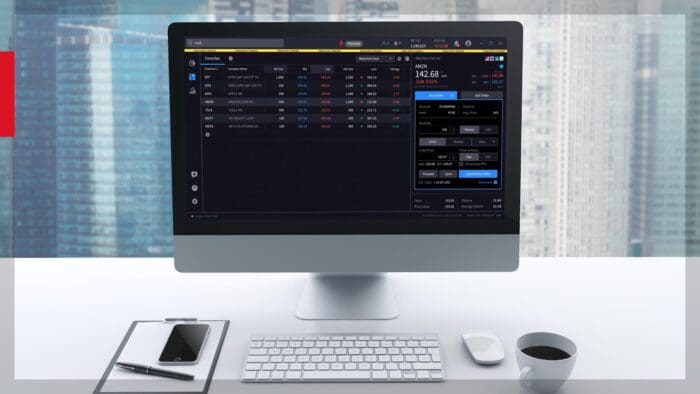Despite the Trump administration reporting that many nations have approached the White House to work out trade deals, heightening tensions between Washington and Beijing are taking center stage and reversing some of yesterday’s sharp stock gains. Meanwhile, March’s CPI offered a significant surprise to a financial community that has been increasingly concerned about the potential for an increase in prices. Forget inflation, we got deflation instead folks, but Wall Street is focused on the reason for declining costs. Moreover, consumer endurance, pricing power and corporate margins are top of mind. Today’s trading action has investors selling across asset classes as they worry about consumption trends, but a few areas are catching bids, namely the short end of the curve, gold bars and forecast contracts.
Deflation, Not Inflation
March offered deflation to a marketplace that has been worried about the opposite. Consumer prices fell 0.1% month over month (m/m) and rose 2.4% year over year (y/y), beneath February’s results of 0.2% and 2.8% as well as the expected increases of 0.1% and 2.6%. Similarly, the core version of the gauge, which excludes food and energy due to their volatile characteristics, increased 0.1% m/m and 2.8% y/y, 2 tenths of a percent below projections across both figures. Meanwhile, February’s core prints came in at 0.2% and 3.1%.
Housing and Oil Pull CPI Down
March’s CPI was pulled down by a sharp decline in gasoline costs and a meaningful deceleration in the heaviest weighted housing category, which comprises 44% of the result and consists of rents and the owner’s equivalent aspect. Gasoline, transportation services and used automobiles decreased 6.3%, 1.4% and 0.7%. Conversely, the sharpest increases occurred in energy services (electricity and heating), food at markets, medical care services, food at dining establishments, and apparel, rising 1.6%, 0.5%, 0.5%, 0.4% and 0.4%. Shelter and new vehicles increased just 0.2% and 0.1%.
Unemployment Claims Remain Rangebound
Unemployment claims remained well anchored in the last two weeks, with both the initial and continuing segments deviating little from recent trends. First-time filings for the week ended April 5 came in at 223,000, exactly as expected, marking a slight increase from the previous week’s 219,000. Continuing claims went the other way, however, for the seven-day period ended March 29, declining to 1.850 million, beneath the projected 1.880 million and the 1.893 million from the prior interval. Four-week-moving averages were essentially flat across components.
Trade Deals Could Shift Attention to Market Tailwinds
Today’s selling pressure is the equivalent to a few bumps in the road as the Trump administration seeks to reach beneficial trade deals while looking to incrementally reduce the nation’s sizeable fiscal deficit. There’s no smooth path to achieving the two difficult goals and some turbulence is to be expected against this uncertain backdrop. But, the strong tailwinds of Trump’s policy mix are on their way, and once those factors begin to coincide with a clearer journey ahead on trade, the bull market in stocks will resume. We’re seeing hesitancy in the economy in the present as folks wait and see what the impacts would be, but confidence will be restored once trade deals are cemented and the GOP gets a taxation package across Capitol Hill. But in the interim, milder regulations and the “drill baby drill” mantra helped to drive March deflation.
International Roundup
China’s Deflation Continues
China’s deflation continued in March with both final consumer prices and wholesale gate tickets declining. After falling 0.2% m/m in February, the country’s Consumer Price Index (CPI) sank 0.4% last month. The decline was twice the rate expected by the analyst consensus estimate. On a y/y basis, the CPI fell 0.1% after descending 0.7% in February. Analysts expected the gauge to be flat.
China has struggled to spur domestic consumption in response to weakening global trade, and last year launched a 150 billion yuan program to subsidize purchases of mid-range smartphones, home appliances and other select products. This year, it will likely double the size of the program.
Chinese manufacturers also reported deflation with the Producer Price Index (PPI) falling 0.4% m/m and 2.5% y/y. The y/y result was worse than both the analyst expectation of -2.3% and February’s 2.2% decline. March was the 29th consecutive decline of the index. The country’s National Bureau of Statistics attributed the decline to lower prices for oil and various raw materials along with weak energy demand.
Japan’s Wholesaler Cost Pressures Escalate
Japan’s PPI climbed 0.4% m/m and 4.2% y/y in March, accelerating from 0.2% and 4.1% in the preceding month. Analysts anticipated a 0.2% m/m drop and that the y/y metric would ease to 3.9%. Relative to February, import prices fell 1.6% while export stickers dropped -0.7% on a yen basis.
Canada Building Permits Pick Up
Permits for industrial and commercial facilities offset weakening demand for residential projects in February, resulting in the total value of approvals for breaking ground climbing 2.9% m/m, according to Statistics Canada. The gain comes after permit values dropped 4.3% in the first month of the year and it exceeds the consensus estimate of -0.5%. Permitting for commercial, industrial and institutional projects jumped 22.9%, 12.4% and 4.1%, while residential fell 2.9%.
Disclosure: Interactive Brokers Affiliate
Information posted on IBKR Campus that is provided by third-parties does NOT constitute a recommendation that you should contract for the services of that third party. Third-party participants who contribute to IBKR Campus are independent of Interactive Brokers and Interactive Brokers does not make any representations or warranties concerning the services offered, their past or future performance, or the accuracy of the information provided by the third party. Past performance is no guarantee of future results.
This material is from IBKR Macroeconomics, an affiliate of Interactive Brokers LLC, and is being posted with its permission. The views expressed in this material are solely those of the author and/or IBKR Macroeconomics and Interactive Brokers is not endorsing or recommending any investment or trading discussed in the material. This material is not and should not be construed as an offer to buy or sell any security. It should not be construed as research or investment advice or a recommendation to buy, sell or hold any security or commodity. This material does not and is not intended to take into account the particular financial conditions, investment objectives or requirements of individual customers. Before acting on this material, you should consider whether it is suitable for your particular circumstances and, as necessary, seek professional advice.



















Join The Conversation
For specific platform feedback and suggestions, please submit it directly to our team using these instructions.
If you have an account-specific question or concern, please reach out to Client Services.
We encourage you to look through our FAQs before posting. Your question may already be covered!